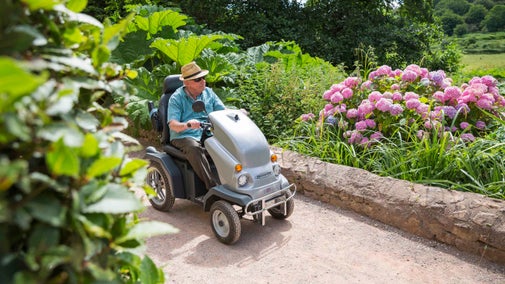
Discover more at Dunster Castle and Watermill
Find out when Dunster Castle and Watermill is open, how to get here, the things to see and do and more.

Explore the history of the watermill at Dunster, records of which appear in the Domesday Book. From milling during medieval times to the bagging of flour today, follow the entire milling process.
Milling has taken place at the Dunster estate since medieval times. The first records appear in the Domesday Book, which records two corn mills on the site: Overmylle and Nethermylle.
In 1427 Newmylle was built next to Nethermylle and by 1430 there were also at least four mills working in the grounds that were connected to Dunster’s cloth industry.
In 1620 Newmylle and Nethermylle were connected to form Lower Mill in the location of the current watermill. In 1779 a comprehensive set of works were carried out resulting in the watermill we see today.
Lower Mill’s machinery was modernised in the late 19th century when all wooden parts, apart from the waterwheels, were replaced with cast iron.
By the 20th century the watermill faced an uncertain future, and the mill produced flour once again during the Second World War but in 1962 it closed and fell into disrepair.

Dunster Working Watermill is a rare type of mill called a double overshot. This means that both wheels are powered by water from the leat on to a launder which delivers the water to the wheels from above.
The upper wheel and associated machinery were repaired in 2007 and the lower wheel was replaced in 2015. Originally the watermill would have been run with three sets of mill stones, however since its restoration in the 1980s it had only operated with two.
Thanks to money raised from raffle ticket sales and a substantial grant from the LEADER scheme we were able to purchase a third set, securing the future of the Watermill for decades to come.
Earlier this year one of the oak axles which was nearing the end of its life was replaced using a more durable greenheart timber. The new 1 ¼ tonne four metre axle was shaped and installed by expert millwrights in a project that took over a month to complete and cost £26,000. Two benches were crafted out of the old axle by one of the estate’s talented gardeners, providing visitors a place to sit, soak up the sunshine and watch the wheels turn.
This year, the mill has opened the bin floor to visitors for the first time since it came into the Trust's care in 2014. A new access route from the observation platform and a new walkway mean visitors can now explore where up to 100 tonnes of grain would have originally been stored and follow the milling process from start to finish. The project to open up the bin floor and replace the axle were made possible thanks to a donation from the West Somerset National Trust Association, a grant from the Rural England Prosperity Fund and a bequest from a generous donor.
Since the Trust took over the running of the mill in 2014, over 18 tonnes of wholemeal flour have been ground from organic grain, which is available to buy at the watermill and in the stables shop.

Find out when Dunster Castle and Watermill is open, how to get here, the things to see and do and more.

The LEADER scheme is part of the Rural Development Programme for England (RDPE) and is funded by the European Agricultural Fund for Rural Development (EAFRD).
Discover a thousand years of history at Dunster Castle. Follow its journey from a Middle Ages fortress to a Victorian family home.

Explore the highlights of the garden at Dunster Castle, which takes you around the world and through four different microclimates

Explore 1,000 years of history at Dunster castle, from its collection of painted leather hangings – the only one of its kind in the UK – to its historic working watermill.

There are several places to enjoy a bite to eat and a drink during your visit to Dunster Castle and Watermill. Find out more about what each outlet has to offer.

Learn about people from the past, discover remarkable works of art and brush up on your knowledge of architecture and gardens.

Explore the objects and works of art we care for at Dunster Castle on the National Trust Collections website.
